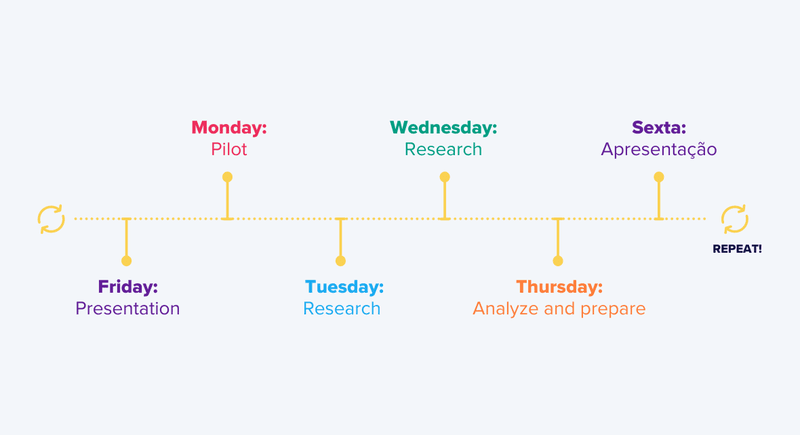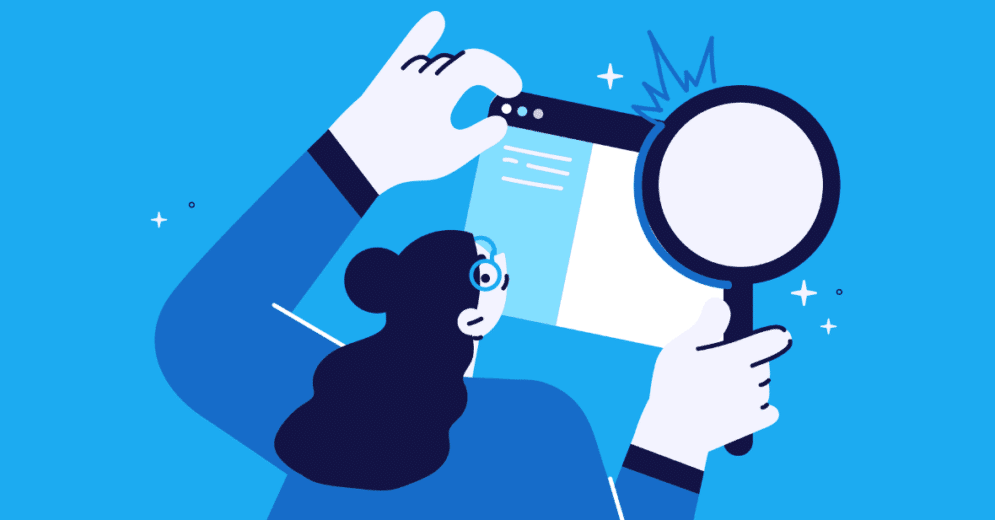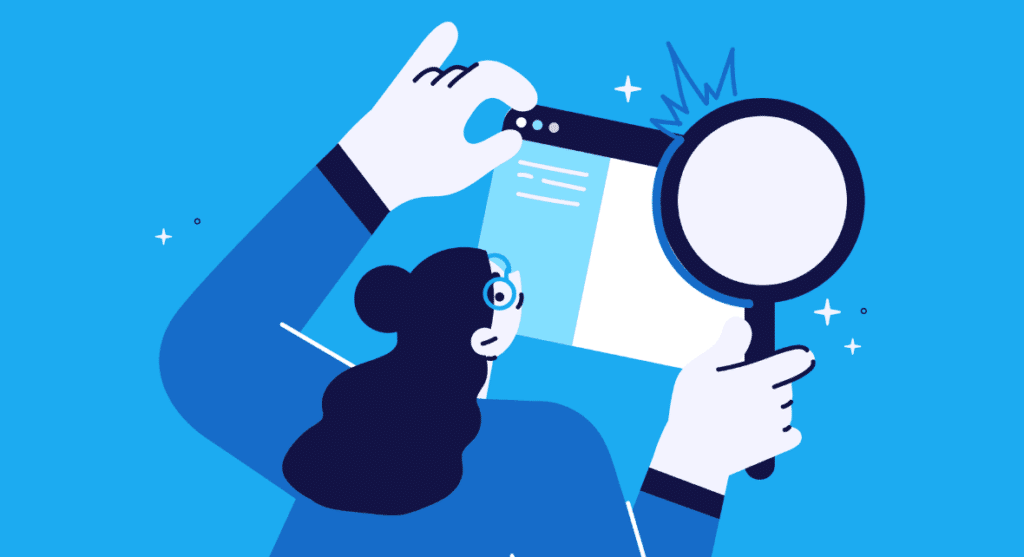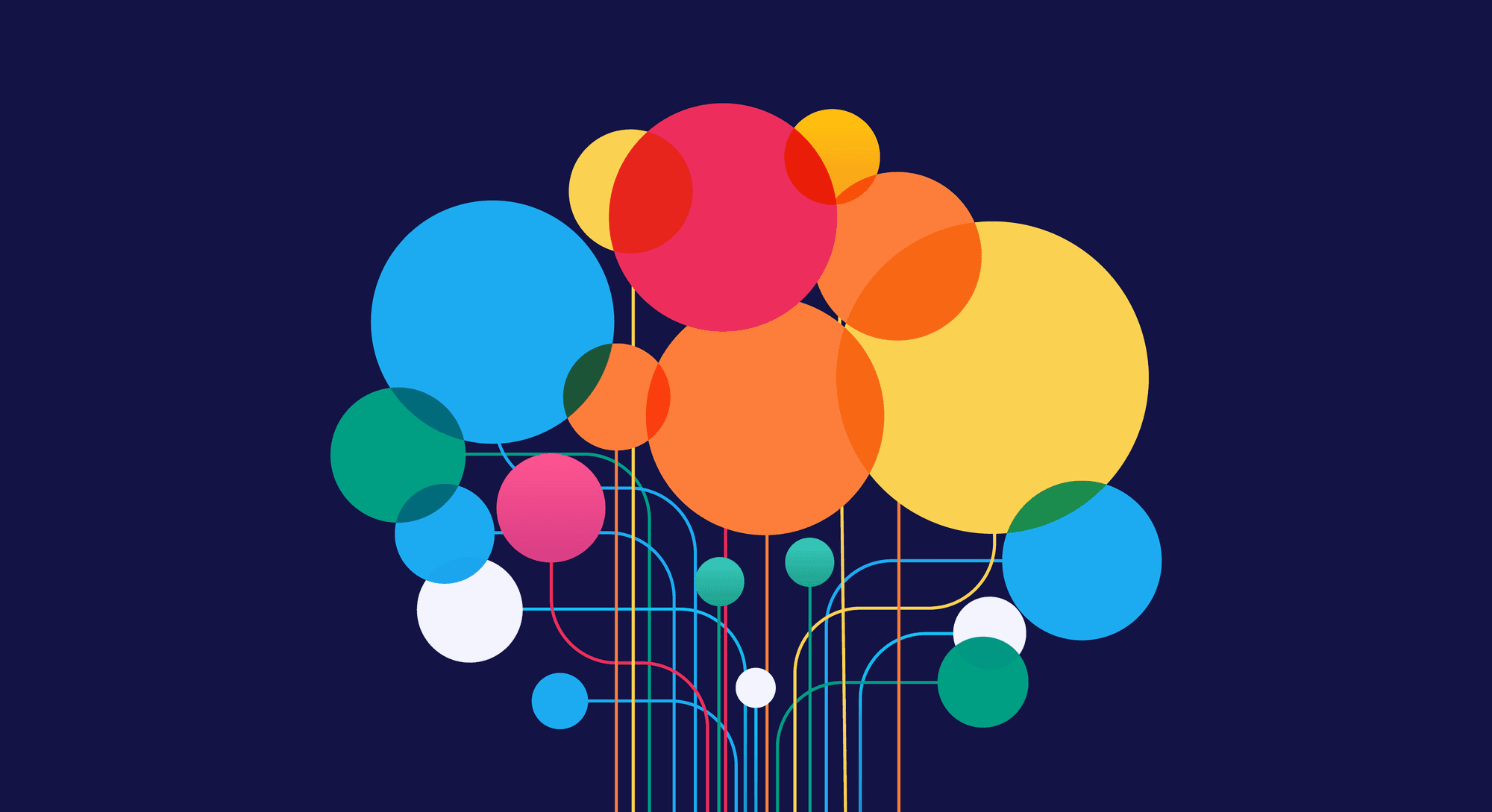Research is a systematic study that adds context and insights to the design process, being a fundamental stage to get to know users and define problems.
UX research seeks to identify and understand user needs, goals, and pains so designers can build better products for them.
For instance, if users can't figure out how to use an app or software, or even if they do manage but don't like to use it, something has to change. So there's a problem to be investigated and solved.
Research is part of the Double Diamond discovery stage and is one of the foundations of User-Centered Design. Its focus is to solve user problems, explaining what works and what doesn't within a specific product.
There are different methods to conduct research depending on your project needs — like the timeframe you have to find results and make decisions. In this article, we will cover a method called Rapid Research.
Reading tip: Tree Testing: How Easily Can Users Find The Information They Need?
What is Rapid Research?
Rapid Research is all about conducting impactful user research to provide quick results in a shorter time span.
In this sense, the cornerstone of Rapid Research is building well-structured frameworks to boost the process.
Rapid Research may seem like a modern technique, but it has been around for a long time, especially in fields where deadlines and results are tight.
Why is Rapid Research relevant to UX?

Rapid Research is a powerful tool to collect information and give insights on questions that pops up every day during a product's life cycle.
Product Designer Oriol Banus has written about a case where he applied a Rapid Research framework to identify the feasibility of a new feature in an existing app.
The situation above illustrates how Rapid Research allows gathering answers in a short period so companies can improve their products in time to stay ahead of the competition.
Rapid Research as an agile tool
Given the characteristics of Rapid Research, it can be a great tool to combine with Agile methods in order to optimize and move faster through each step.
Similar to a Design Sprint, the proposal of Rapid Research is having team members focused on asking the right questions, relying on frameworks, predetermined milestones, and, of course, running against the clock to find answers and achieve goals.
Because of this, Rapid Research can be a great ally in projects where companies are already familiar with methodologies like:
- Agile philosophy;
- Design Sprints;
- Lean UX and Lean Startup;
- User-centered Design.
How to conduct a Rapid Research
Rapid Research is based on efficient, well-defined frameworks to find answers and insights to specific questions quickly.
We'll describe two processes of Rapid Research with different timeframes: 2 weeks and one week.
Two-week framework

As mentioned earlier in the article, we'll describe Oriol Banus' research method below, a two-week sprint.
Before starting
Before getting down to business, it's essential to gather all information related to the product and the problem; this will guide the Research more assertively, like:
- Product: study the product, market and competitors;
- Hypothesis: draw hypotheses on how to add value to the product or how to improve it;
- Goals: how to achieve these hypotheses (i.e., identify user needs, would they pay for this service/upgrade/product, how to smooth transition/experience, how to achieve it with the company's existing technology);
- User persona: identify your target according to your product (e.g., age, behavior, profile, income, technological knowledge).
Secondary Research: Internet Research
Secondary Research is a type of data that has already been compiled and published by others. You can find secondary sources in books, journals, on the Web, or through your company's previous research.
Banus created a flow where his team worked on secondary research and then moved to primary research to find quantitative and qualitative insights.
Day 1 is entirely dedicated to internet research, where the team gathers insightful and relevant information according to established goals. Then, each team member creates a slide with all the data they had collected during the day — including links, images, and quotes.
By the end of the day, the team meets to share their findings, and each person has 30 minutes to make a small presentation. While one person is sharing the information, the other team members highlight what they thought was more interesting.
The purpose of day 1 is to understand the context and get enough information to plan the primary research.
Secondary Research: Benchmarking
On the second day, the team focuses on a competitive analysis of products and services that are in the same niche as the product in question.
During this stage, the objective is to understand how competitors deal with the presented problem. Here, the team can check if there's a solution already being deployed by other companies, how to improve based on what other companies are offering, and how to set themselves apart, delivering better innovative solutions.
Understanding how competitors work is a vital strategy for examining possible solutions and whether they work or not.
Primary Research: Survey
Primary Research is developed specifically for a determined project to get information through surveys and interviews tailored to your needs.
At the beginning of Day 3, the team meets to brainstorm questions for the survey with all the insights they got from the secondary research. It's a good practice to mix qualitative and quantitative questions as well as open and closed questions.
Open-ended questions help you to find out more than you can anticipate. Test your questions by answering them with yes or no, and rewrite those to find out more about how and what. The survey is then sent by the end of Day 3.
Primary Research: Interviews
On Day 4, the team meets to analyze all the answers from the survey and work on the following step, preparing for interviews.
On Friday — Day 5— it's time to recruit candidates for the interviews that will happen between the 6th and 8th day of the following week. Companies should aim for at least five interviews with the target audience.
During Day 5, the team also works on the presentation compiling results from the secondary investigation (internet research and survey).
Presentations
On Thursday, the team spends the whole day working on presentations to share all the learnings that will be presented to stakeholders on the tenth and last day of the flow.
Tip: you can split the presentation into primary and secondary research.
Last but not least, list all recommendations on the panel.
One-week framework
Google's research team developed the 1-week framework, and they take place from Friday to Friday.

Friday: Day 1
Researchers and partners should define the problem to be investigated during the quick-off, as the research question guides the whole process.
Sometimes, the clients present the problem or question they need to investigate to the research team.
It's also essential to establish the required assets for the Research — designs, mockups, prototypes, sketches.
Monday: Day 2
On the second day, the proposal is to pilot the study with employees and guarantee everything is set up for the following research steps.
At this point, there should be synergy between researchers and partners (or clients) to make sure everything is running smoothly.
The focus here is to discuss prototypes and other elements tested in the next steps. If necessary, this is also the time to make adjustments.
Tuesday and Wednesday: Days 3 and 4
These two days are dedicated entirely to research sessions.
In between sessions, the team analyzes and compares secondary research data, adding information to the final presentation whenever they identify relevant supporting material.
After each session, the team makes sure everybody is on the same page by debriefing. They also encourage stakeholders and clients to observe studies as much as possible. By doing so, stakeholders and clients are up-to-date on the process.
This communication is crucial to provide a fast-paced process to the research team.
Thursday: Day 5
On the fifth day, the team prepares the final presentation.
Before wrapping up, the team gets together to review each others' slides and go over the whole presentation. Here, the team can get feedback and check if everything is correct and nothing is missing.
Friday: Day 6
On the last day, it's time to present all the findings.
It's essential to present the methods used and the participants' profiles, as well as quotes, videos, gifs, links, and images. In general, we recommended putting all information supporting the results' presentation.
When to apply Rapid Research
Rapid Research has its benefits, but that doesn't mean it would be a good fit for any project.
In this sense, we can establish that Rapid Research is more suitable for tactical projects, in which designs and assumptions are tested, as in:
- interview with users;
- usability studies;
- benchmarking/competitive analysis;
- concept testing;
- user journey evaluations;
- literature reviews;
- gathering information through soft surveys.
Therefore, it's essential to discern when rapid Research is suitable; otherwise, it could not be possible to obtain efficient results to support decision-making.
Reading tip: Alignment in UI: The Invisible Structure Behind Designs
Tips and final comments

Rapid Research demands organization, collaboration, and excellent team management to apply an efficient research approach. It's about identifying bottlenecks and finding the proper methods and tools to speed things up.
Here are some final tips you can add to your research process and optimize each step of the way:
- Organize your notes: during interviews and throughout the research process, have everyone write down significant insights, quotes, and any thoughts that might be relevant for analysis and presentation. Notes should be documented and shared — some teams choose specific apps to time-stamp their notes automatically.
- Use your time well: meeting the study deadline is crucial at Rapid Research; in this sense, optimize your time, anticipate tasks and fill in time gaps between activities;
- Form pairs or groups: organize the team into small groups or pairs for interviews and surveys, this way, no one gets overloaded and you have someone to switch off tasks.
- Test methodologies: each team and project is unique and a new opportunity to iterate and learn something new. Always test new frameworks and tools to optimize your steps further;
- Multidisciplinarity: if possible, work with a diverse team involving developers, designers, stakeholders. Different views bring valuable insights and opinions.
Case study: Rapid Research and the health care sector
Rapid Research is commonly used in health care because it requires quick, actionable results to help people as fast as possible.
In this regard, the Department of Family Medicine and Community Health at the University of Wisconsin created a Rapid Research program to promote Rapid Research based on Big Data and electronic health records to answer questions quickly.
Objectives of the University's program :
- to standardize their approach;
- begin to automate and learn from the process so they can develop algorithms that can be used on big data for subsequent classes and increase the velocity of Research;
- to foster surveys implemented by professionals not trained in research methods (doctors);
- quick results to improve the health of communities — with health being an area where time is crucial to saving lives;
- enhance the research implementation experience for users who are not research technicians.
The program aims to provide answers to questions created by medical professionals who deal with the challenges of the health care system. The results can support decisions to improve the overall community's health.
Check out Research Director Larry Hanrahan's presentation on the Rapid Research program:








